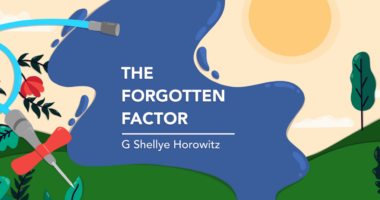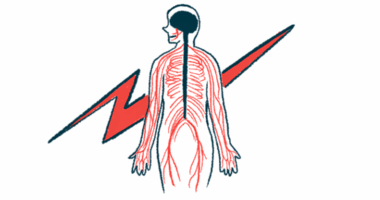Why I’m afraid of surgery as someone with hemophilia
Past complications make me hesitant to undergo any procedures

Note: This column describes the author’s own experiences with surgical procedures. Not everyone will have the same response to these operations. Consult your doctor about the potential risks and benefits of any procedure you’re considering.
As I get older, the thought of needing any kind of surgery scares the bejeebers out of me. I’ve put off things like foot surgery for my nagging bunions and sinus surgery, both of which I probably need. A knee replacement was once laughably recommended for my dislocating knee — yeah, that’s not happening!
I watch in amazement as members of our bleeding disorders community undergo major procedures. In the past six months alone, two people I’ve profiled for this column have had surgery: Jennifer Hastie had foot surgery, and Wayne Cook underwent open-heart surgery plus a liver transplant. Strangely enough, Jen’s foot isn’t healing well, but Wayne’s body is.
Why am I scared? Because surgery and I don’t have a good track record. My first surgery at age 10 — a tonsillectomy — is how I was diagnosed with hemophilia B and von Willebrand disease. The bleeding was hard to control during the procedure, and a week later, it started again. I had to be rushed back to the hospital for an emergency procedure to stop the bleeding.
Tooth extractions, knee surgeries, biopsies, dilation and curettage procedures, and countless other minor operations have been complicated by bleeding events. Some procedures went smoothly, mostly because I received treatment before and after. But sometimes, treatment wasn’t enough.
Navigating surgical complications
A few years ago, I had a hernia repair and a radical hysterectomy — something I knew was inevitable, so I spent years preparing for it. I learned how to self-infuse. I had a detailed treatment plan. All of my doctors were on board, and I chose to have the procedure at one of the largest hospitals in Florida — a full two hours from my home.
There was a heated debate in the prep room before my surgery about whether to administer a preventive blood thinner to reduce the risk of clots. While this step is standard protocol, there were concerns about my bleeding risk.
Ultimately, I received high-dose infusions of factors VIII and IX before the surgery to prevent bleeding, but not any blood thinners. Unfortunately, I developed life-threatening pulmonary embolisms — thankfully, while I was still recovering in the hospital. I had to go on a blood thinner to dissolve the clots.
Looking back, I now know I should’ve been taking blood thinners along with the factor, but when you’re lying in a hospital bed struggling to breathe, you don’t think to ask those kinds of questions.
Healing didn’t go well. I developed seromas and hematomas, and — just my luck — turned out to be allergic to the mesh, which became infected. That year involved three surgeries, emergency hospital visits for sepsis, a wound vac, and a whole lot of depression and pain.
Surgery? No thanks. I’m good!
Note: Hemophilia News Today is strictly a news and information website about the disease. It does not provide medical advice, diagnosis, or treatment. This content is not intended to be a substitute for professional medical advice, diagnosis, or treatment. Always seek the advice of your physician or another qualified health provider with any questions you may have regarding a medical condition. Never disregard professional medical advice or delay in seeking it because of something you have read on this website. The opinions expressed in this column are not those of Hemophilia News Today or its parent company, Bionews, and are intended to spark discussion about issues pertaining to hemophilia.








Frank Richards
I have a long history of surgical procedures and interesting situations. When I was 10 or 11 I had my tonsils and adonis? removed. I had not been diagnosed with hemophilia yet so after being taken home I almost bleed to death, throwing up blood and returned to the hospital to stop the bleeding. My mother asked the doctor if I had hemophilia. The doctor said no in a letter which I still have but said I was just a bleeder. I have had arthroscopic surgery on both knees, open heart surgery, both hips replaced as well as both knees. There is much more to the story but after reading your article I have the same fears and doubts about surgery and treatments. One area people thinking about surgery is the recovery through PT. Most if not all PT people have no idea about hemophilia and how their treatments effect recovery. I am still recovering from last knee replacement.
Jennifer Lynne
Thank you, Frank! I, too, have had difficulty with physical therapy. See my column on this topic here: Click here
Sharon Henson
I had 3 brothers with Hemophilia born in the late 30's and late 40's. By 1960 all 3 brothers had passed away, ages 4years, 17, and 27years. I myself, a female did not know for certain that women could have Hemophilia. Looking back I had hemorrhaged, needing a blood transfusion, having my only child, a son. Second time I hemorrhaged needing transfusion was 8 years later when I had to have a Hysterectomy. I shied away from any kind of surgery because I was afraid I would bleed. In my 70's I needed nose surgery because I had injured it from an accident. My ENT would not touch me until I saw a Hematologist because he said the surgery would cause a lot of bleeding and had I ever needed a transfusion. After hearing my story, he insisted I see the doctor he referred me to. It turned out I have 25% low factor 8. I only had 1 child because doctors said I was a carrier but NEVER tested me to see if I myself had a bleeding problem. Is this common with older people that have a history in genetics but never did know THEY THEMSELVES could have a problem. Is this common?
Jennifer Lynne
Thank you so much for sharing your powerful story. It’s heartbreaking to hear about the loss of your brothers and the challenges you faced with bleeding and surgeries throughout your life. Sadly, it’s not uncommon for women in your generation and mine to have experienced similar situations. For many years, hemophilia was thought of as a “man’s disease,” and the possibility that women could also have bleeding symptoms was often overlooked. Even though women were recognized as “carriers,” testing for factor levels and symptoms in women wasn’t routinely done back then.
Your experience of having symptoms and only later discovering a low factor VIII level—highlights how awareness and understanding of hemophilia in women have changed over time. Today, we know that women can have low factor levels and bleeding symptoms, just like men, and that testing and diagnosis should include women who have a family history or personal bleeding issues.
Your story is a testament to how far we’ve come and how important it is to keep educating and advocating so no one else has to go through what you did. Thank you again for sharing. It’s a reminder of how essential it is to listen to women’s experiences and make sure everyone gets the care they need. ❤️